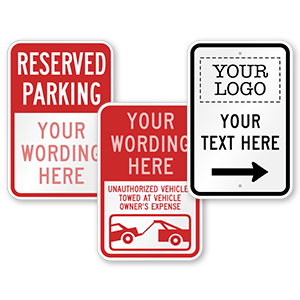This Week in Signs — Edible, Floating, Instated and Missing
Friday, May 24, 2012 —

Leo Ilyayev, manager of Ilya’s Barber Shop on Lispenard Street, which will be receiving new street signs this week from the city. (DNAinfo/Julie Shapiro)
“Lost” TriBeCa Street to Get New Signs Business owners on Lispenard Street, a two-block road in TriBeCa, are overjoyed that their street will finally emerge from obscurity when it receives its own signage from the city. The small street houses a number of businesses, including a bookstore, a barber shop and a French shirt store. all of whom have struggled to maintain a customer base despite to the difficulty of locating the sign-less blocks. Luckily, the city finally agreed on Wednesday to install several street signs by the end of the week. After years of anonymity, the collection of local venues hopes to reestablish its niche in NYC’s trendy TriBeCa neighborhood.

Potato chip lab director Brian Wansink holds up a stack of the sign-colored chips used in his Cornell Food study.
Can Edible ‘Stop Signs’ Rein in Overeaters? University researchers recently conducted two weight loss studies in which students were given tubes of potato chips. In both studies, some of these tubes contained red-dyed chips, evocative of stop signs, at fixed intervals, while the control group lacked such vibrant edibles. Ultimately, the researchers concluded that the inclusion of these “stop sign chips” reduced snackers’ intake by about 250 calories. Color-coding is certainly the language of the traffic sign world, so why not convert the kitchen as well?

Darran Bruce’s floating billboards have made waves in the Seattle advertising community.
Adman’s Floating-Billboard Idea Deserves to be Sunk Floating billboards have now become a reality thanks to Seattle advertising mogul Darran Bruce. Bruce has begun attaching advertisements to 14-foot high poles on pontoons. These can then be linked to make waterborne flotillas reaching up to 192 feet long. The innovater told the press that he sees amphibious advertising as a way to “convey messages on the other 75% of the planet’s surface.” Despite Bruce’s creativity, these enormous marketing ploys don’t float everyone’s boat. The billboards, which will be lit up at night, have been accused of introducing unwanted light pollution on the waterfront.

Posting Danger signs is only part of the equation when it comes to worker protection and safety measures at a construction site. (Via MySafetySign.com)
OSHA Cites Contractor in NYC Building Collapse that Killed Worker; $77K in Fines Possible The Occupational Safety and Health Administration has cited SP&K Construction with eleven safety violations, fining the company a total of $77,000. On November 8, 2011, a worker was killed after unstable flooring in a multi-storied building collapsed suddenly. Four other workers were injured in the incident. OSHA officials have accused the New York City contractor of failing to ensure that the building had proper structural framing. Exterior walls were not correctly aligned, and scaffolding was braced incorrectly. The company’s negligence cost a life and damaged four more- a testament to the importance of safety signage around a construction site so that workers are made aware of potentially dangerous zones. Of course, signs cannot be a replacement for human precaution- only when the two are combined can further tragedies be prevented.

Billboards along I-15 have spurred dispute in the Salt Lake City area, where some claim digitizing signage along the highway is a safety concern.
Billboard Battle Heats Up in Salt Lake City In the city nicknamed the Crossroads of the West, a clash of aesthetics has come to a crossroads as well. Cities along the Watasch Front in Utah are joining forces with Salt Lake City to battle an onslaught of digital billboards in the area. Reagan Outdoor Advertising filed a lawsuit on May 8, 2012, against the nearby city of Murray, after officials refused to accept the company’s application to upgrade advertisements on I-15 to digital billboards. City officials cited the updated billboards as a traffic hazard, but gave the advertising company no further reasons for their hasty dismissal. The Salt Lake City region is one of a number of U.S. cities currently battling against the digitalization of roadside billboards. Many cite their presence as a major contribution to distracted driving, while other critics, including Arizona’s opposition, complain that electronic billboards cause light pollution. Do you think these cities and states have the right to turn away these upgrades? Let us know in the comments section below.
– R. Sapon-White and T. Caruso










